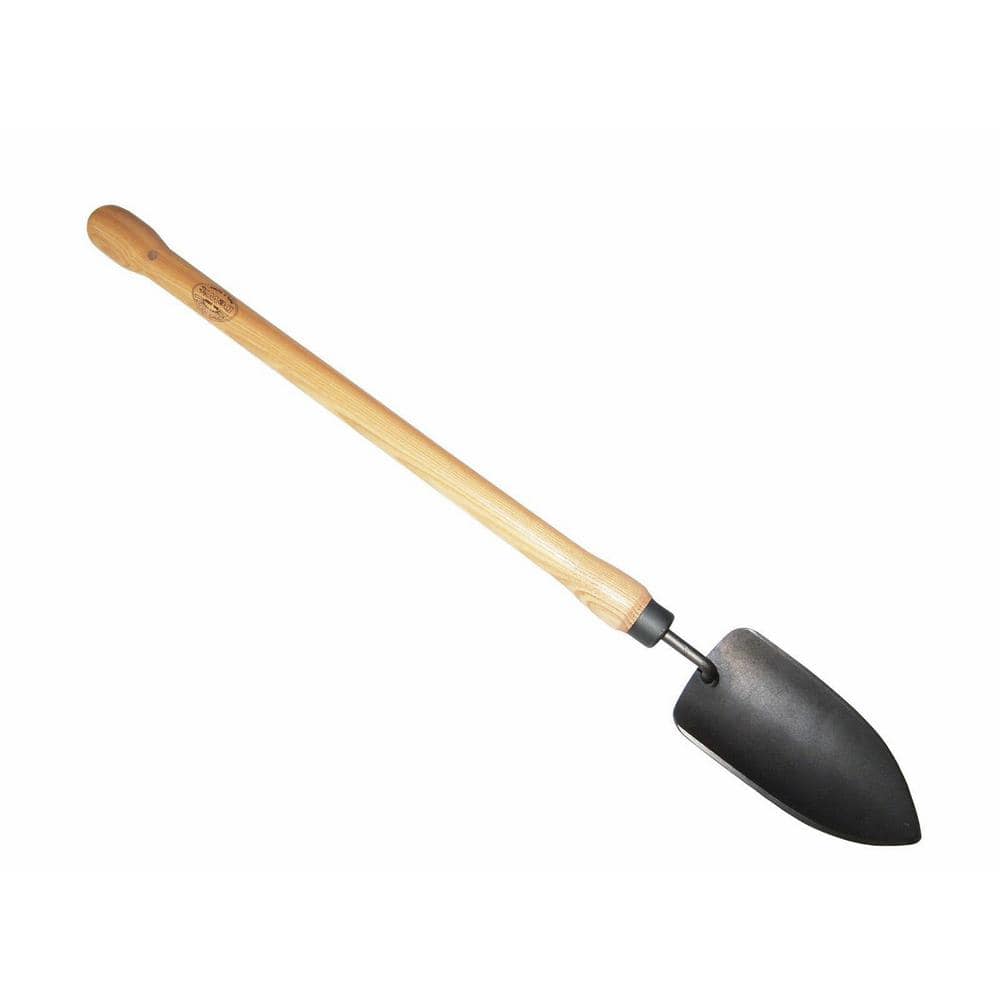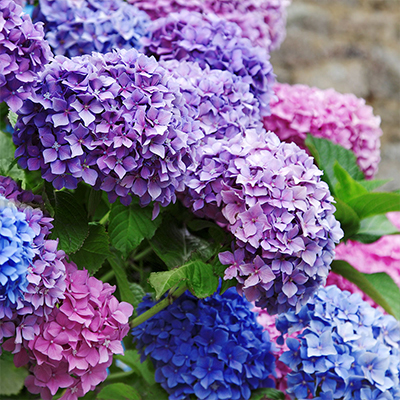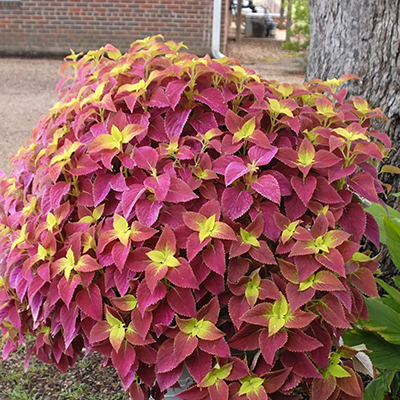How to Grow and Care for Caladiums
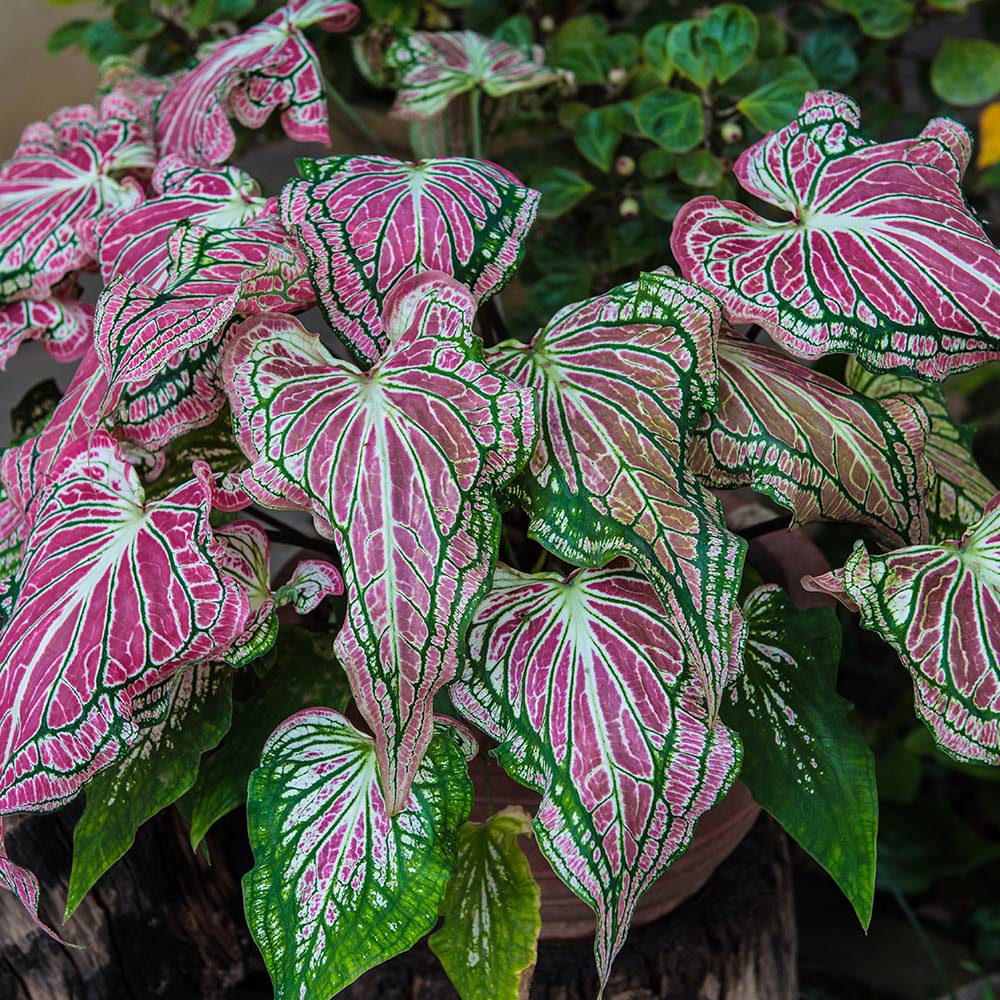
Last updated December 23, 2024
If your grandmother had a flower garden, chances are she had caladiums. Caladiums are popular because of their heart-shaped variegated leaves in shades of bright red, pink, white and green. Even better, caladiums thrive both indoors and out. This guide features everything you need to know to grow caladiums.
Table of Contents
What You Need to Know to Grow Caladiums
Varieties of Caladiums
Tips for Growing Caladiums Outdoors
Tips for Growing Caladiums Indoors
Propagating Caladiums
Keeping Caladiums Healthy
What You Need to Know to Grow Caladiums
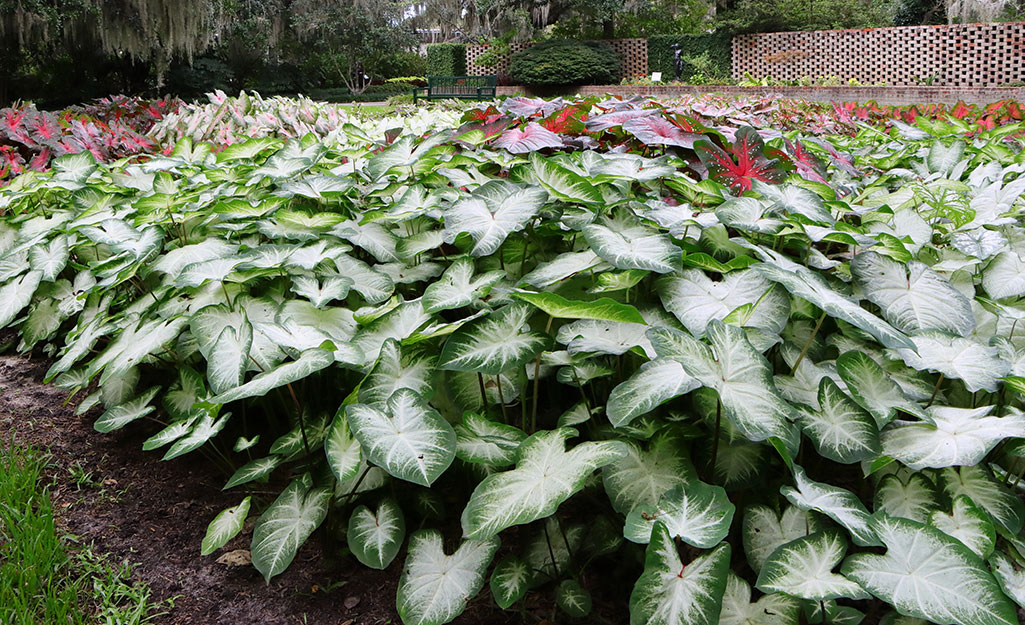
Caladiums (Araceae) are plants that love the heat, and while they do produce spikes of flowers, it’s their colorful, showy leaves that make them so popular. You’ll find striped, mottled and veined caladiums in pinks, reds, whites, greens and a combination of these colors.
Caladiums grow from bulbs but thrive both indoors and out. Once established, they provide months of showy foliage, from spring well into autumn. Outside, when other plants are wilting from summer heat, caladiums are unfazed. Caladiums are hardy in USDA growing zones 8 to 12.
Varieties of Caladiums

When purchasing caladiums, some companies will list their specific variety. More often than not, caladiums will be labeled by colored. There are a few varieties you can look for:
- “White Christmas” caladiums have large, heart-shaped green leaves with bright white accents.
- “Heart and Soul” caladiums grow up to 20 inches high and come in a variety of variegated colors.
- “Puppy Love” caladiums have heart-shaped pink leaves with green borders.
- “Miss Muffet” caladiums are a dwarf version with green leaves sprinkled with bright pink spots.
Tips for Growing Caladiums Outdoors
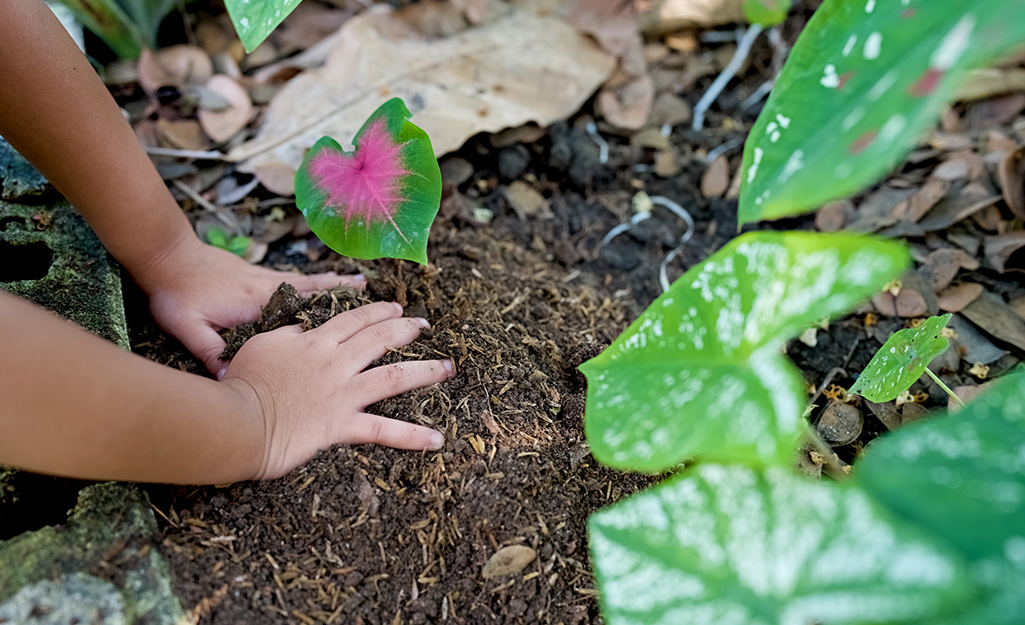
To grow caladiums outdoors, find a shady spot with plenty of filtered sunlight—not direct sunlight. East- and north-facing garden beds and containers on a shaded patio are good choices. If planting tubers, wait until the last frost but before the night temperatures start to warm. The soil should be at or above 70 degrees Fahrenheit. Plant the top of the bulb so that the eye is up and about 2 inches below the ground surface. Make sure the soil is loose around the plant but do not mix in compost. Instead, plant the tubers and then add compost around the top of the plant. Fertilize every six weeks with a slow release fertilizer and use only as much as you need.
During the hot summer months, water caladiums every week or when you notice their leaves drooping. Once the foliage dies back, dig up the tubers to winter inside. If you live in warmer climates, you can leave the bulbs/tubers in the ground to winter outside. Fertilize the plants only during spring and summer; doing so in fall or winter disrupts their growth cycle.
Tips for Growing Caladiums Indoors
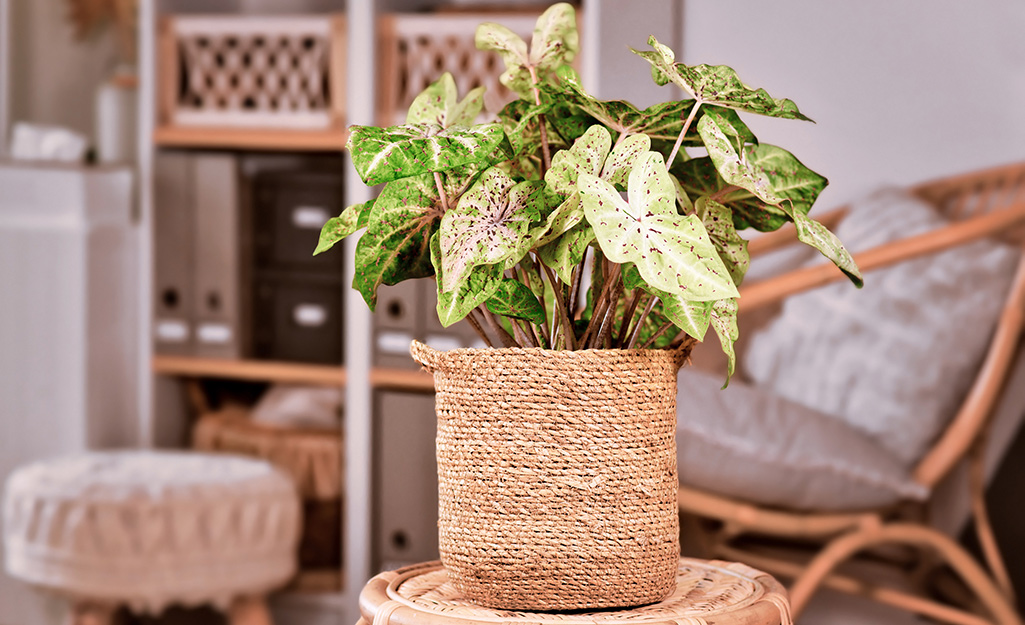
The growing period for caladiums indoors is longer than the outdoor growing period. However, in both cases, caladium leaves die back during their dormant season. Optimal conditions for growing caladiums include warm rooms such as bathrooms and laundry rooms where there is high-moisture content in the air. Consider misting to boost the humidity the plants are exposed to. Do not place them near an air conditioning vent or fan; this will dry out their leaves and soil.
As indoor plants, caladiums need at least four hours of filtered sunlight daily. They do not like direct sun hitting their leaves. Temperatures between 60 to 75 degrees Fahrenheit are best. Water caladiums kept inside about once a week.
You’ll need to plant caladiums in organic potting soil and then keep the soil moist except during the fall, when you’ll want to let it dry out when the leaves start to die off. Fertilize plants only during spring and summer; doing so in fall or winter will disrupt their growth cycle. This is when caladiums enter a dormant season and need very little water. Cut off all leaves. Tubers can be left in soil or dug up and stored in a breathable container in a cool, dry, dark place to winter. When you see new growth, you can resume your care plan.
Propagating Caladiums
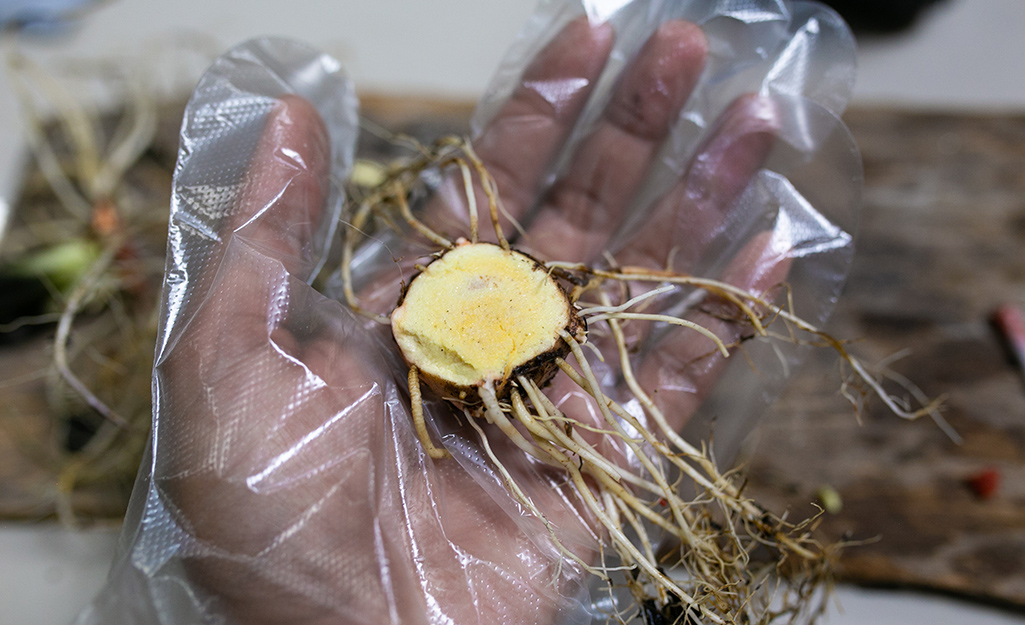
In the late fall or winter when caladiums have died back, dig up the tubers and bulbs. Place in a box or breathable container and place in a cool, dark, dry place for winter.
In the spring, cut the tubers or bulbs into pieces, making sure that each piece has an eye. Set aside for a few days to give the tuber time to recover.
To plant, place the tuber in dirt with the eye facing up. You can do this in a pot or in the ground.
Keeping Caladiums Healthy
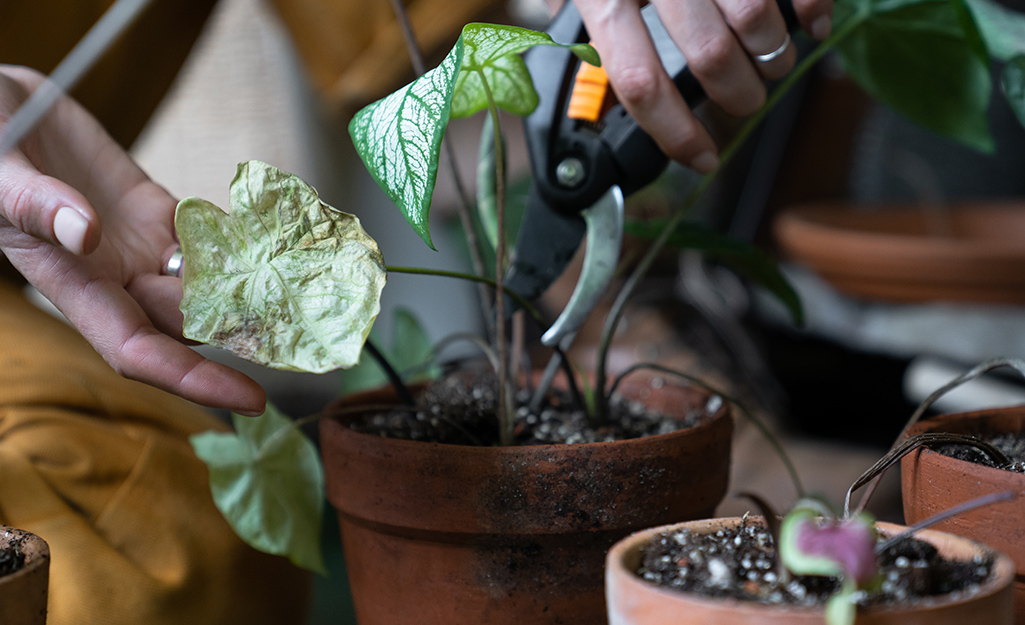
Caladiums with brown leaves can have soil that’s too dry, be in too much direct sunlight, have too much fertilizer applied, or lack enough humidity in the air to keep the plant moist.
Caladiums with yellow leaves could be suffering from a magnesium, nitrogen or iron deficiency. Too much light, temperature fluctuations and overwatering or underwatering can also cause leaves to turn yellow.
The Home Depot has a variety of caladiums already arranged in pretty containers, or to purchase as tubers or small plants ready for your garden bed. Check out The Home Depot Mobile App for the latest tools and supplies.




